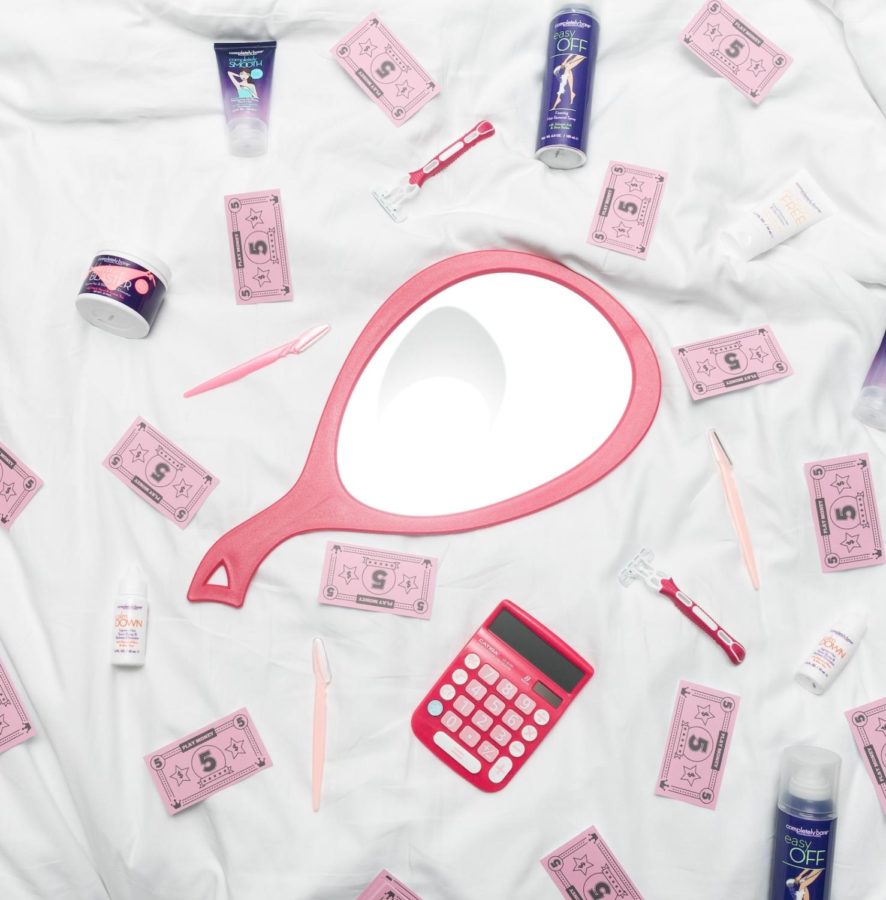Pink Tax: What it is and how it affects you
According to the New York Department of Consumer Affairs, it is a proven fact that products in purple packaging cost more than the same product in blue packaging.
October 12, 2021
People who use female advertised products often spend more money than people who use male advertised products, mostly based on the pretty pink and glittery packaging it sometimes comes in.
Pink tax, which is an upcharge on products typically used by women, can cost up to $1,300 a year, according to a study from Bankrate. Bankrate said this upcharge can happen whether the product is slightly different than the men’s version or identical. This typically does not have a positive response from those who use these products.
“I think capitalizing on people’s needs and helping instill societal pressures on women and girls is not only gross, but insanely sexist,” Emily Hatch, a third-year Iowa State student in architecture professional degree, said. “Having to spend more for basic necessities has an effect on my budget and my friends’ weekly and monthly.”
These products include things like shampoo, deodorant, razors and other personal care items. Healthline said that on average, women’s shampoo costs $2.71 more, razors cost $0.91 more and body wash costs $0.30 more than similar men’s items.
Hatch said, “I buy men’s products like razors and deodorant. I also tend to buy unisex or men’s clothing because women’s clothing is more expensive.”
In 2015, the New York City Department of Consumer Affairs found that products advertised to girls were priced 7% higher than those advertised to boys. One example they found was that a pack of five Schick Hydro razors was $18.49 in purple packaging and $14.99 in blue packaging.
“I personally think that making packaging pretty or adding scents is an easy way to drive prices up in a minuscule way for consumers, but bring in some big profits to companies over time,” Amanda Peirce, a junior in mechanical engineering at Iowa State, said. “I think it is very easy for companies to do this because beauty and societal standards have been shoved down our throats for our entire lives, which in turn will make consumers want to conform in any way they can.”
Large companies seem to be using nicer packaging, prettier colors and a stereotypical girly presentation to justify higher prices when the only difference is that the product is meant for women.
Along with the pink tax is the tampon tax that also affects women and is seen in the same Healthline article. According to Healthline, in 36 states, tampons have a sales tax even though they are a necessary product. Some items that do not have sales tax in states where tampons do include wine, marshmallows and gun club memberships.
“The pink tax is there to overcharge and take advantage of women,” said Cereniti Antonia Campos, a sophomore in animal science at Iowa State. “When it comes to the notorious ‘tampon tax,’ it practically denies anyone in need of the product proper and fair access to basic hygiene.”
When an additional cost is added to these products, consumers are forced to budget items that are necessary to them. Many places look for donations of these products, especially tampons and pads because many women struggle to afford them.
More information for these donations can be found here.

















